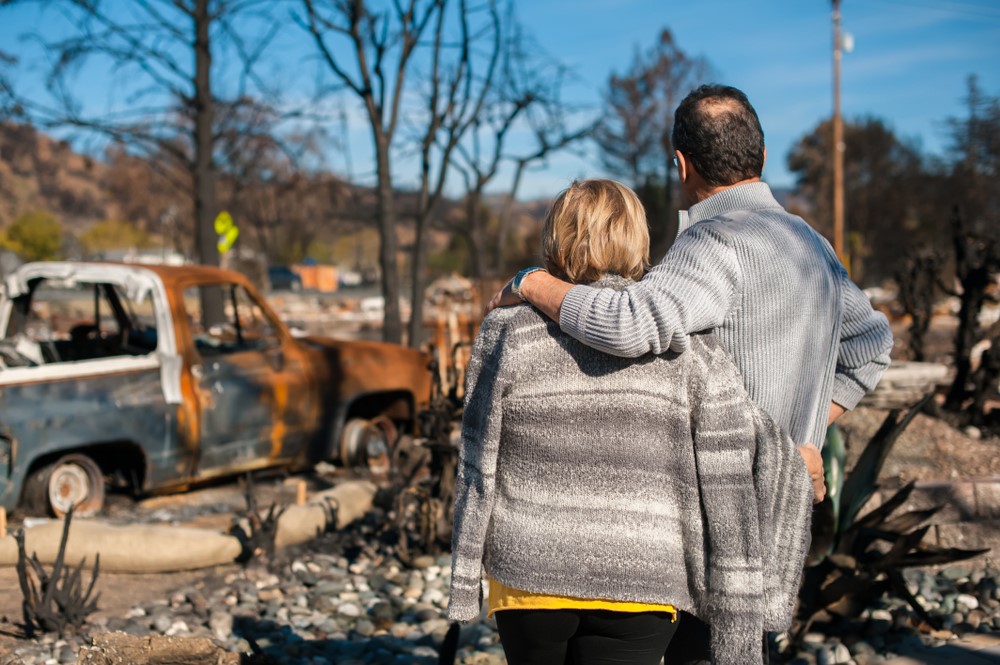Does Home Insurance Cover Wildfires? Understanding Wildfire Insurance Coverage

When wildfires strike, they can devastate homes, properties, and entire communities. If you live in a province or area prone to wildfires, you need to know whether your home insurance covers wildfires.
Wildfire protection is typically included in home insurance policies, but there are some things you’ll want to know to ensure that you're adequately covered.
Western Financial Group, a 100% Canadian company, can help you navigate your home, car, boat, and business insurance during this period of economic uncertainty.
What Is wildfire insurance coverage?
If you are affected by a wildfire, home insurance typically helps cover repairs and the cost of having to temporarily move out of your home. Most business insurance policies cover fire damage, too. If residents have to leave their homes because of a mandatory evacuation order issued by civil authorities, most homeowner's and tenant's insurance policies typically provide coverage for reasonable additional living expenses for a specified period of time.
Home insurance generally includes two main types of coverage for wildfire damage:
Dwelling coverage
This protects the physical structure of your home if it’s damaged by a wildfire, including the house, garage, and other permanent structures.
Personal property coverage
This protects your personal belongings, such as furniture, clothing, and electronics, in the event they are damaged or destroyed by a wildfire. That said, it's important to keep an inventory of your personal belongings and their value in case you ever need to submit a claim.
If your home is damaged by a wildfire, your home insurance typically can help repair or rebuild your home and repair or replace damaged personal property. If you need to move out while your home is being repaired, your home insurance should cover additional living expenses for this as well. You should always review your policy for exclusions or limitations that could affect your coverage.
How are fire insurance rates determined?
When your insurer determines your home insurance premium, the risk of fire damage is one of the key factors they consider. In addition to whether you live in a high-risk area, insurance companies consider these factors when insuring a property:
- Is it protected, meaning your home is 300 m or less from a fire hydrant and close to a fire hall?
- Is it semi-protected, meaning there is a fire hall about 13 km away or closer but no nearby fire hydrant?
- Or is it unprotected, meaning the nearest fire hall is further than that and there are no fire hydrants?
If you live in an area at high risk for wildfires, such as near forests or grasslands, your insurance policy might include wildfire-specific exclusions or higher premiums. We can help you to confirm if any exclusions apply. Policies vary between insurance providers. Some may offer comprehensive wildfire protection, while others may require additional riders or endorsements. Check your policy’s coverage limits to ensure they’re adequate to rebuild your home and replace your belongings if lost in a wildfire.
As an insurance broker, Western Financial Group compares insurance options from trusted providers across Canada and take your specific situation into account to make sure you get exactly the coverage you need at the right price – no surprises!
Building the best wildfire protection into your home insurance policy
Your home insurance policy probably already covers wildfire damage, but there are some additional steps you can take to ensure you're fully protected:
1. Add endorsements or riders to your policy
If you're in a high-risk area, consider adding an endorsement (or rider) to your policy to provide more comprehensive coverage for wildfires. These endorsements can increase your coverage limits or cover additional wildfire-related damages, such as smoke damage or debris removal. Not sure what an endorsement is? One of our insurance experts can help!
2. Increase your coverage limits
In some areas, rebuilding costs can sometimes exceed standard policy limits. You’ll want to make sure that your dwelling coverage limit is enough to rebuild your home in the event of a total loss. It’s usually possible to raise your limits or purchase additional coverage to ensure full protection.
3. Keep an inventory of your belongings
Creating a home inventory can help make the claims process much easier if you ever need to replace personal property lost in a wildfire. We recommend regularly updating the inventory and storing it in a safe place, ideally off-site or digitally.
Take steps to protect your home and belongings in case of fire
- Make a plan in the event that you’re forced to evacuate at a moment’s notice.
- Ensure that you have the right insurance coverage to help rebuild your life if a fire destroys your home.
- Clear away debris, shrubs, wood, or any other fuel sources surrounding your house.
- Use fire-resistant materials like asphalt, metal, slate, clay, stucco, or brick for roof construction and siding.
- Do not store propane or gas tanks or firewood piles under your deck or close to your home.
- Cut away large branches that overhang your roof.
- Clean roofs and gutters of dead leaves, debris and pine needles that could catch embers.
- Remove any dead branches and debris from under your deck.
- Water plants and trees, and mulch regularly.
- Install a sprinkler inside your home.
- Install smoke detectors in your house - be sure to check the batteries regularly and have working fire extinguishers readily accessible.
- Prepare a home inventory list, and store it in a fire-proof safe, safety deposit box or in the cloud where you can easily access it.



